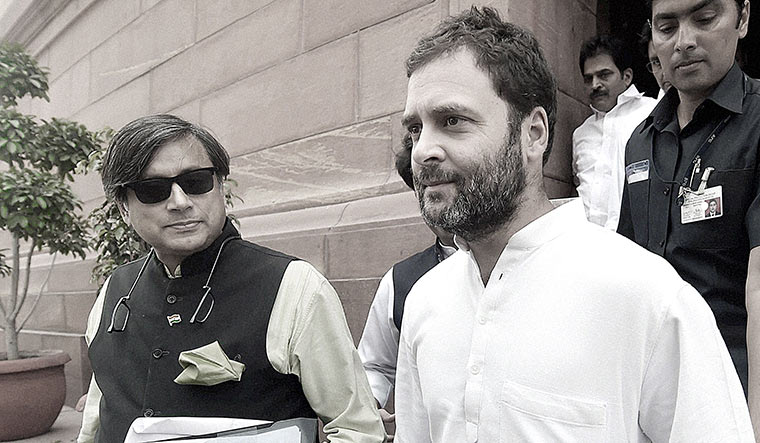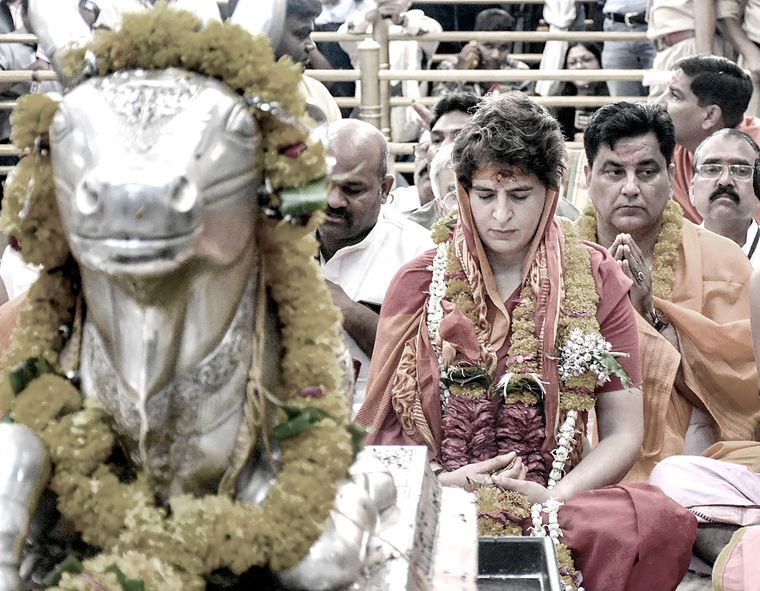IT HAS BEEN a difficult few weeks for the Congress, but none more so than for the evergreen party loyalist, who has had to witness a sharp decline in the fortunes of her party.
These are disheartening times for Congress supporters—after all, with the momentum and energy that the party, galvanised under Rahul Gandhi’s leadership, carried into the elections, there was little to suggest that its electoral fortunes would pan out the way they did. But conventional wisdom found itself up-ended, and in the months to come, the party and the supporters who carry it, will have to engage in serious introspection on what went wrong and work to identify the path ahead for the party.
To be certain, while the current reality is indeed grim, obituaries for the Congress remain premature. For one, as the results from Kerala, Punjab and Tamil Nadu have shown, the party is far from “out for the count” and nearly 12 crore Indians (just short of 20 per cent of the electorate) cast their vote in favour of the Congress. While this may have only translated to 52 seats in the Lok Sabha, it still is a long way beyond the cries of irrelevance that commentators have been rashly ascribing to the party since the declaration of the results.
At the same time, as the more sagacious of our supporters recognise, the Congress has found itself in the throes of similar woes in times past—be it in terms of its electoral fortunes in 1977 and 1989, and the wilderness between 1996 and 2004, or in the daunting circumstances precipitated by the leadership vacuum following the tragic assassinations of two of its former prime ministers. And yet, in the aftermath of each of these instances, the grand old party displayed an immense capacity to weather change (and indeed suitably pivot itself to the evolving political context of the time), and bounced back to victory each time.
This history of the Congress offers fitting solace to aggrieved party supporters. It is they who recognise better than any other that in the past we have been beaten, but never broken. We have been diminished but never extinguished. And, while we have been fundamentally questioned before, we have always come back with answers to those questions and have turned the page on a new chapter in the Congress’s history.
At the same time, merely relying on tradition is not the solution that the Congress supporter seeks. Rather, it is the message at the core of that tradition that the loyalist wishes to see—the party’s capacity to reinvent itself in the face of major setbacks. The results have made it clear that there is an imminent need for course correction within the party and how it rises to that challenge will determine in a significant way what the future holds for it.
What does this involve?
INTERNAL FIXING
THE IMMEDIATE requirements are fairly clear. The Congress sympathiser is likely to be understandably worried by the ongoing confusion regarding the post of the Congress president, something that will only increase with each passing day if the lack of clarity persists. The post is of added importance particularly given that the party will have to embark on a revival plan soon—including contesting three important assembly elections just four months from now, in Maharashtra, Haryana and Jharkhand—and the leadership of the president will be irreplaceable for the party.
Rahul Gandhi remains the right man for the job. For one, while results may not have gone our way, he led the party from the front, personally spearheading a well-coordinated and energetic campaign that saw him campaign in a different state each day, holding more rallies than even Prime Minister Narendra Modi. In each of these rallies, he connected well with individual communities, with effective messaging that took the core ideology of the Congress to the masses and earned him the admiration of voters and political rivals alike.
As a result, even in defeat, the Congress sympathiser rightly recognises that Rahul should remain the captain of the ship, especially in order to successfully and wholly revive the fortunes of the party nationally. It is also abundantly clear, that if a free and fair internal election were held for the post, the same loyalists would ensure that Rahul would win handsomely against any other contender. It speaks volumes about his capacity to harness support and carry forward all sections within the party.
At the same time, there are other equally pressing needs that the party sympathiser is desperate to see, particularly the need to promote inner-party democracy (something Rahul has been consistently right on) and rein in internal dissent. Open up the party to internal elections for its key positions, including membership of the Congress Working Committee. Allow, indeed encourage, the emergence of local, state and regional leaders, ratified by periodic votes of party members. At the same time, crack down severely on the disloyalty and dissidence stoked by those who put their personal ambitions above the party’s interests, a habit visible in many places during the recent elections. When such behaviour occurs against elected leaders, it is easier to discredit it than when it is conducted against those who can be portrayed as unelected courtiers.
In doing so, the party will reiterate a key message to its sympathisers—that in moving forward it will place a premium on performance and capability and, at the same time, not be averse to making the difficult decisions it will have to take to successfully embark on this journey of revival. To a certain extent, the party has already begun to do so in Uttar Pradesh and Karnataka, where it has dissolved local committees of the Congress and in one case, instituted a disciplinary committee to look into cases of inner-party dissent.
EXTERNAL MESSAGING
AT THE SAME TIME, the party also needs to work out and address the message it wishes to project externally. At a practical level, the Congress is rightly accused of having lost touch with the grassroots in many states. We must focus more on local body elections, and pay more attention to the petty problems of governance and corruption that beleaguer most Indians and which voters blamed us for when they occurred under our rule. Democracy is not just about elections every five years, but also about what happens to the daily lives of ordinary citizens between elections. We have to return to the ethos of politics as social work for those who cannot help themselves.
This can only be achieved if the party strengthens its apparatus at the ground level—starting with sorting out its foundations at the booth level and the workers who are the engines of the party on the ground. Again, the party must not be hesitant to weed out bad eggs and those who lack the necessary capability. Equally, it should promote those who have consistently and systematically delivered for the party.
Also read
- I told Tharoor it is better if there is a consensus candidate, says Kharge
- Cong president polls: Gehlot backs Kharge, says Tharoor is 'elite class'
- Rahul told me a non-Gandhi should be Cong president: Gehlot
- Congress leadership has no time to set things right: Azad
- Karnataka Congress awaits a new, effective state leadership
- Is Rahul Gandhi still the best bet to revive fortunes of the Congress?
- Congress should consider getting Mamata on board to challenge BJP
Above all, there is an ideological revival that the party must embark on. The Congress’s core message has been the values it has embodied since the freedom struggle—in particular inclusive growth, social justice, communal harmony, abolition of poverty and the protection of the marginalised, including minorities, women, dalits and adivasis. These have been distorted and portrayed as pandering to vote banks rather than as the genuine, indeed visceral, convictions they are. We are the political embodiment of India’s pluralism and have been a strong and committed voice for the preservation of secularism as its fundamental reflection. We need to reaffirm our belief in these values and keep reiterating them at every opportunity.
We made a beginning in recent years with our top leaders eschewing their habitual reticence and speaking out more often, more spontaneously and more loudly, including on social media. Doing so consistently would set an example of accessibility and transparency about our values, our actions, our motives and concerns. If we share our thinking with the people, we will find it easier to bring them to our side. The media-driven mass politics of the 21st century requires open communication, which the Congress in the not-so-distant past had shied away from. That must change for good.
This will go a long way toward energising the demoralised Congress loyalist. Those who are suggesting that the answer to the party’s woes in the Hindi heartland is to become more like the BJP in “majority appeasement” are making a cardinal error. If the voter is presented with a choice between an original article and a pale imitation, he will choose the original every time. Rather than allowing ourselves to be intimidated by the BJP’s success, it is far better for us to stand up for what we have always believed in and urge the country to follow our principles.
The loyalist will respect a party that demonstrates the courage of our convictions rather than offering some sort of ‘Hindutva Lite’. Like Coke Lite and Pepsi Zero, ‘Hindutva Lite’ will end up with ‘Congress Zero’.
As our first prime minister memorably pointed out, “Failure comes only when we forget our ideals, objectives and principles.” It is a prescient message for the Congress loyalist today.
Tharoor is Congress MP and author.



